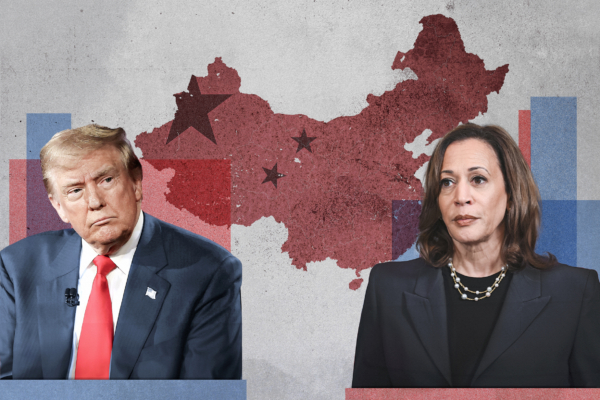According to a new poll released on Monday, November 4th, as the U.S. election approaches, the competition between Vice President Harris and former President Trump is intensifying in key swing states.
Emerson College Polling and The Hill released polls on the eve of election day showing a tight race between Harris and Trump in the battleground states. Trump holds an advantage in Arizona, Georgia, North Carolina, and Pennsylvania, while Harris is leading in Michigan.
In Nevada and Wisconsin, the race is neck and neck between the two candidates.
In North Carolina, Trump leads Harris by 49% to 48%; in Pennsylvania, Trump leads Harris by 49% to 48% as well. In Arizona, Trump is slightly ahead of Harris with 50% to 48%; in Georgia, Trump leads Harris by about 50% to 49%.
Meanwhile, in Michigan, Harris leads Trump by 50% to 48%. Both candidates are tied at 48% in Nevada, while in Wisconsin, they each have 49%.
With the margin of error in each swing state’s poll results, the race between the two candidates in each state is essentially a draw.
The polling conducted by Emerson College and The Hill took place between October 30 and November 2. In Arizona, 900 respondents were surveyed with a margin of error of 3.2 percentage points; in Michigan, 790 respondents were surveyed with a margin of error of 3.4 percentage points; in North Carolina, 860 respondents were surveyed with a margin of error of 3.3 percentage points; in Nevada, 840 respondents were surveyed with a margin of error of 3.3 percentage points; in Pennsylvania, 1,000 respondents were surveyed with a margin of error of 3 percentage points; and in Wisconsin, 800 respondents were surveyed with a margin of error of 3.4 percentage points.
According to data from the University of Florida Election Lab, over 77 million Americans have already voted before election week, almost half of the 160 million ballots returned in 2020.
In the final days of the election, both candidates are making stops in seven swing states, as these states will determine who returns to the White House in November. The aggregated national polls by Decision Desk HQ show both candidates with a 48.3% support rate.
Vice President Harris spent the entire day on Monday in Pennsylvania, a crucial battleground state offering 19 electoral votes, which are expected to sway the election results.
Harris plans to hold rallies in Pittsburgh and Philadelphia to conclude her campaign events. Her Philadelphia rally will feature performances by pop singer Lady Gaga and Oprah Winfrey.
A senior official from Harris’s campaign team stated that over the weekend, there were over 90,000 volunteers mobilized, knocking on over 3 million doors in swing states.
Among the volunteers involved in this effort is someone whose name might catch Wall Street’s attention: Judy Dimon, wife of prominent political donor and JPMorgan Chase CEO Jamie Dimon, who was out canvassing for Harris in Michigan over the weekend.
On Monday, Harris largely refrained from mentioning Trump and instead tried to focus attention on forward-looking issues. At a rally in East Lansing, Michigan, she engaged in a dialogue with some Arab-American residents of the state and expressed concerns about America’s support for Israel. She stated, “As president, I will do everything I can to end the conflict in Gaza.”
Meanwhile, Trump plans to hold four rallies in three states: North Carolina, Pennsylvania, and finally Michigan.
In an interview with NBC, Trump mentioned that former presidential candidate Robert Kennedy Jr. would play a “significant role” in his administration.
Kennedy is the nephew of former U.S. President John F. Kennedy and withdrew from his independent candidacy to support Trump’s presidency.
Both candidates emphasized the economic platforms they would build, as polls indicate that the economy remains the top concern for voters.
Data released last week showed that despite the impact of two major hurricanes and a strike by airplane mechanics, and job growth rates lower than expected, the U.S. economy continues to grow amidst cooling inflation.
(This article referenced relevant reports by The Hill)

